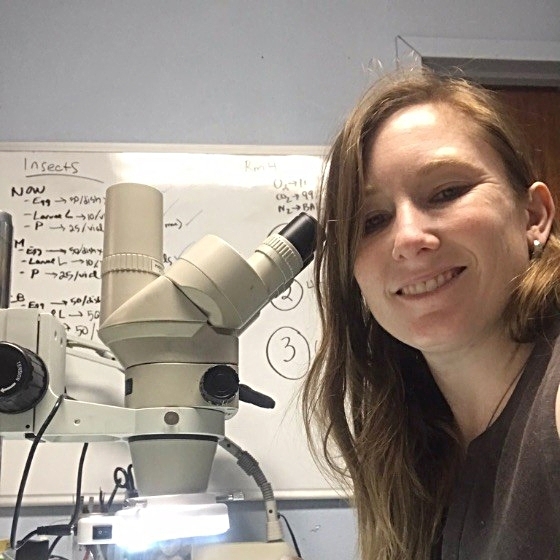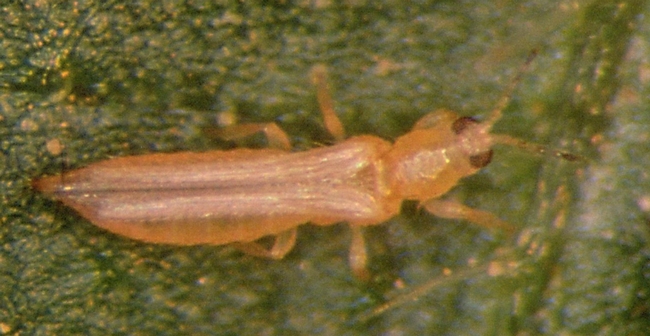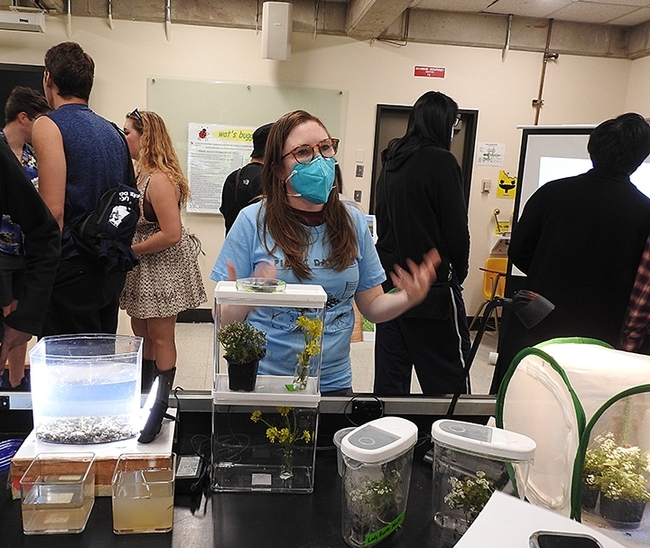
Her dissertation proposal begins at 10:30 in 122 Briggs Hall and also will be virtual. The Zoom link: https://ucdavis.zoom.us/j/
“In the proposed research, I will study the effectiveness of both automated precision spray applications and drone-mediated releases of biological control agents for the suppression of lettuce aphid and western flower thrips in several contexts," she says in her abstract. "I hope that the results of the proposed research will contribute to the development of best-use practices to guide the use of both technologies."
"I will generate novel data that fill existing knowledge gaps regarding the use of precision insecticide applications and drone releases of natural enemies in lettuce production systems. This will advance the adoption of these new pest management tools and contribute to a more sustainable integrative pest management system for lettuce."
Addie received her bachelor's degree in molecular environmental biology from UC Berkeley in 2011 and her master's degree in horticulture and agronomy from UC Davis in 2018. Before enrolling at UC Davis, she worked as a researcher under research chemist Spencer Walse at the USDA Agricultural Research Service (ARS) laboratory in Parlier, CA (2019-2021) and the UC Davis Contained Research Facility in Davis, CA (2012-2019), studying postharvest integrated pest management (IPM) of quarantine pests.

In her abstract, she noted that "Commercial lettuce production in California's central coast represents 70 percent of the production in the United States. Recent discoveries of some chemistries in ground and surface water in the Salinas valley region have placed the insecticidal chemistries used by the industry at risk of increased regulation. Automated thinner-sprayers use plant-detection sensors to apply chemical sprays directly to individual lettuce plants, so that the same amount of product to plants as a standard broadcast sprayer while potentially reducing the amount of pesticide applied per acre by up to 90 percent. Field experiments testing this technology for the control of western flower thrips (Frankliniella occidentalis) and aphids, lettuce-currant aphid (Nasovonia ribisnigri) and others, were conducted to compare the efficacy of automated sprays to a conventional broadcast application system. Experiments were conducted in conventionally managed organic romaine lettuce fields using a complete randomized block design. Prior to and at regular intervals after treatment, heads were sampled from experimental and control plots to assess pest pressure. Results from this experiment validate the use of the automated sprayers to apply insecticides for the control of aphid and thrips pests in lettuce and will be discussed in the context of developing best-use-practices for this technology."
Abrams delivered a presentation on Rearing methods for brown marmorated stink bug, Halyomorpha halys, on live host plants at the 2019 Pacific Branch of ESA, and has authored or co-authored several publications on stink bugs, including
- Ethyl formate dilution in carbon dioxide for fumigation control of the brown marmorated stink bug Halyomorpha halys, Stål (Hemiptera: Pentatomidae), Pest Management Science, 2022
- Greenhouse rearing methods for brown marmorated stink bug (Hemiptera: Pentatomidae) on live cowpea plants, Journal of Economic Entomology, 2021 (lead author)
-
Sulfuryl fluoride fumigation to control brown marmorated stink bug (Hempitera: Pentatomidae),Postharvest Biology and Technology, 2020 (lead author)
Attached Images:
